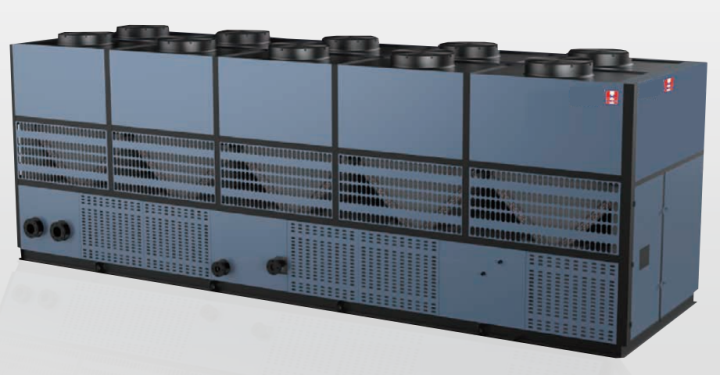Integrated Evaporative Cooling Screw Chiller – The Energy-Saving Champion
The Energy-Saving Champion is an integrated central air-conditioning unit jointly developed by HON MING, Tianjin University, and Chongqing University’s School of Power Engineering. It has received multiple national patents and gained widespread recognition from both the industry and users.

This unit fills a critical gap in the HVAC industry, where traditional water-cooled chillers are limited to cooling only and cannot provide heating. By combining evaporative condensation and evaporative cooling technologies, the system significantly enhances energy efficiency. Moreover, it can dynamically switch operation modes based on outdoor air conditions, further reducing energy consumption and achieving true green energy savings.
Dual-High-Efficiency Heating and Cooling
HON MING’s integrated dual-efficiency chiller (heat pump) unit is backed by two invention patents (ZL201610074393.X, ZL201610074269.3) and ten utility model patents, surpassing industry standards. It achieves a cooling efficiency (COP) of over 6.0 and a heating efficiency (COP) of over 3.5, significantly exceeding the industry benchmark of COP 3.0 for both cooling and heating.
Product Features
Feature 1: High-Efficiency Evaporative Condenser
- Constructed with phosphorus-deoxidized copper tubes or stainless steel tubes, ensuring high heat transfer efficiency and strong corrosion resistance.
- The condensation temperature is 2–3°C lower than water-cooled chillers and 15°C lower than air-cooled chillers.
- Energy efficiency improves by 5–7.5% compared to water-cooled systems and around 35% compared to air-cooled systems.
- Water circulation volume is about 50% of water-cooled systems, and cooling water pump power consumption is only 30% of traditional water-cooled chillers.
Feature 2: Advanced Evaporator Options
- Standard: Falling film evaporator for superior performance.
- Optional: Flooded evaporator and dry evaporator.
- Advantages of Falling Film Evaporator:
- Evaporation temperature is 3–4°C higher than a dry evaporator and 0.5–1°C higher than a flooded evaporator.
- Refrigerant charge is 30% lower than a flooded evaporator, with 10% higher heat exchange efficiency.
